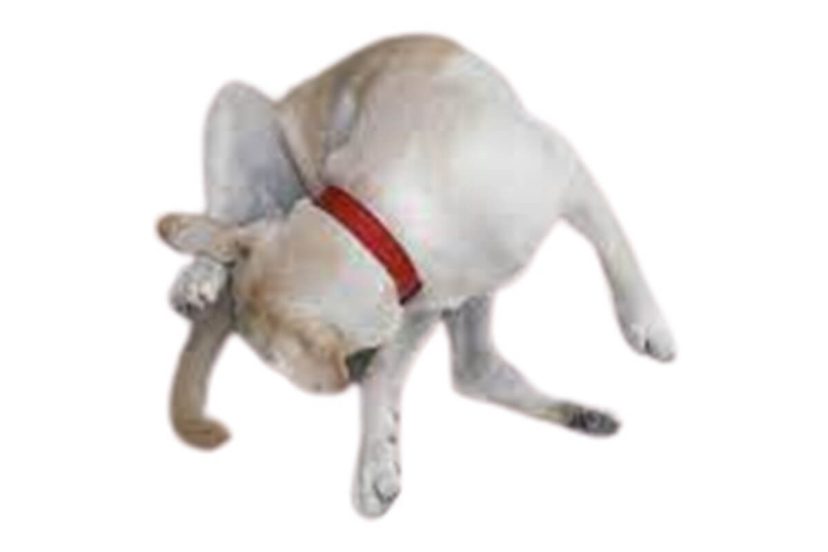Understanding Paraphimosis Dog: Prevention and Care
As someone who’s weathered through various health scares with my four-legged buddies, I’ve learned a thing or two about those awkward conditions that no one really likes to talk about. Paraphimosis dog is one of these awkward conditions. It’s a tricky topic but crucial for us to understand if we want our pooches to live comfortably and healthily. Every dog parent’s playbook should have a chapter on preventing health issues, and when it comes to paraphimosis in dogs, it’s a topic that we tend to overlook – until it’s staring us in the face, quite literally. Let’s dive into how you can keep your furry friend healthy and happy, with special attention to preventing this particular uncomfortable condition.
Understanding Paraphimosis Dog
Paraphimosis is a medical conditional that occurs when a dog’s penis becomes stuck outside the prepuce – that’s the sheath or foreskin, and it can’t retract back to its normal position. It might sound alarming, and honestly, it can be quite distressing to see. Additionally, paraphimosis dog can lead to discomfort, pain, and even serious health complications if not addressed promptly. As a dog parent, it’s one of those conditions you never want to see your beloved pooch suffer through.
Causes of Paraphimosis: Signs and Symptoms
Why does this happen? It could be a case of excessive licking, an enthusiastic playdate gone wrong, arousal, mating, or even an injury or even a genetic quirk that the dog is born with. Whatever the reason, we, as responsible dog parents, need to be on top of it. In the case of paraphimosis dog, the signs can be hard to miss – but easy to misunderstand. You might notice your dog persistently licking at his genital area or find that he seems overly preoccupied with his discomfort. There could be swelling, redness, and sometimes, an apparent inability to urinate properly. The area may also appear dry or chafed. It’s distressing, to say the least, both for you and your furry companion.
Immediate Actions for Your Dog’s Well-being
What to Do First
When you suspect paraphimosis in your dog, the initial steps include keeping calm and preventing your dog from self-inflicted harm through excessive licking.
Gentle Manual Therapy
Gently try to reduce the swelling with a cool compress and cleanse the area. Try to gently lubricate and massage the penis back into the sheath. Apply a lubricant (such as KY jelly or other personal or sterile surgical lubricant), with gentle manual manipulation trying to ease the penis back into the prepuce. However, this must be done with utmost care to avoid further injury. If there’s any resistance, stop immediately and seek professional help.
When to Call the Vet
If the issue does not resolve or if your dog seems to be in pain, it is crucial to call the vet immediately for professional advice and intervention.
Professional Veterinary Treatment of Paraphimosis Dog
Your vet might use lubrication, cold compresses, or osmotic agents to reduce swelling. Medication may be an option or, in severe cases, sedation or surgery may be necessary to correct the condition. The Vet knows best, so follow their lead.
The Proactive Path: Preventing Paraphimosis Dog
Prevention is always the best approach. Understanding the importance of prevention can save both heartache and hefty vet bills. As well as sparing our furry friends from discomfort. It’s about protecting your dog’s health proactively.
Routine Checks
Regularly check your dog’s genital area for any abnormalities. Preventing issues can be as simple as keeping the hair around your dog’s sheath trimmed and free of mats and tangles. Long hair can trap dirt and debris, or even cause entanglement of the penis, leading to paraphimosis.
Trimming the hair around your dog’s sheath is an essential part of grooming that can prevent a host of issues, including paraphimosis.
Here’s a step-by-step guide on how to safely trim this delicate area:
Preparation:
- Prepare Your Dog: Begin with a calm, relaxed dog. If your pup is anxious, spend some time comforting and reassuring them with pets and treats. It’s best to tackle trimming when they’re in a cooperative mood.
- Gather Your Tools: Use a pair of sharp, rounded-tip scissors or a small, quiet trimmer designed for pet grooming. The rounded tips are less likely to poke or injure your dog if they move suddenly.
- Create a Peaceful Environment: Choose a quiet, well-lit space where your dog feels comfortable. Avoid loud noises or distractions that could startle them during the process.
Trimming process:
- Brush First: Gently brush the area to remove any knots, mats or tangles. This will make the trimming process smoother and less uncomfortable for your dog.
- Lifting the Hair: Use a comb to lift the hair away from the skin. This provides a barrier between the skin and the scissors and allows you to see the length of the hair you’re cutting.
- Trimming: Carefully trim the hair, pointing the scissors away from your dog’s body. Take your time and trim small amounts at a time to avoid cutting too close to the skin.
- Use Clippers for Longer Hair: If the hair is long, you might opt for electric clippers with a guard comb. This can make the process quicker and is often less stressful for both the dog and the owner.
More to consider:
- Stay Calm and Patient: Maintain a soothing demeanor throughout the process. If you’re calm and gentle, your dog is more likely to stay still, making it safer for both of you.
- Frequent Short Sessions: If your dog is new to this, keep the sessions short and positive. Gradually increase the time as they become more accustomed to the process.
- Praise and Reward: Once you’re done, offer plenty of praise and a treat. This positive reinforcement helps your dog associate grooming with good experiences.
- Check for Irritation: After trimming, keep an eye on the area for any signs of redness or irritation. If you notice any discomfort, contact your vet for advice.
- Professional Groomers: If you’re not comfortable trimming the hair around your dog’s sheath yourself, or if your dog is particularly sensitive about being touched in that area, consider seeking the help of a professional groomer.
Remember, the goal of trimming is not just aesthetic; it’s a health precaution. Keep these sessions regular, integrating them into your dog’s grooming routine to help prevent paraphimosis and other complications associated with long, matted hair near the genital area.
Proper Hygiene
Maintaining proper hygiene is essential in preventing infections that could lead to or exacerbate paraphimosis. Keeping the prepuce (the sheath or foreskin), clean and free of hair or other foreign matter that could interfere with retraction
Managing Environmental Factors
Discouraging your dog from excessive humping behavior can also help prevent paraphimosis from occurring. Limiting situations that may cause arousal and ensuring your dog has a safe, comfortable space to relax can help prevent episodes of paraphimosis.
Consider Neutering
Neutering your dog may reduce the risk of paraphimosis, especially if it’s related to sexual behavior.
Dietary Strategies: Nutritional Balance
Food is more than just fuel. A well-balanced diet is your first line of defense. A balanced diet keeps your dog’s immune system ready to fend off issues, including those involving their private parts.
- Foods to Include
Incorporate foods rich in omega-3 fatty acids like fish or flaxseed oil; they’re like nature’s little anti-inflammatory pills. Lean meats, fresh veggies, and a sprinkle of fruits can also provide a broad spectrum of nutrients to keep your dog’s tissues healthy. - Foods to Avoid
On the flip side, cut down on excessive human treats and fatty foods. Obesity can lead to a myriad of problems, and paraphimosis can be one of them.
The Power of Supplements
Sometimes diet alone doesn’t cover all the bases. Supplements can boost overall health, making tissues down there less prone to injury and better at healing.
Glucosamine, for instance, supports joint health, which indirectly affects your dog’s ability to position itself properly and avoid injuries that could lead to paraphimosis.
Fish oil supports your dog’s health, reduces itchy and flaky skin, promotes a silky coat and can help reduce joint pain and allergies.
Vitamin E and vitamin C are fantastic for tissue repair and health. If you’re getting the picture that prevention of paraphimosis in dogs is a lot about maintaining overall good health – you’re spot on.
The Role of Exercise
Exercise isn’t just about burning off extra treats. It’s about keeping your dog’s body working as it should, which includes its reproductive system. Regular romps in the park or hikes can help keep everything in its right place. A fit dog is a healthy dog. Consistency is key. Regular exercise ensures everything functions as it should.
Behavioral Training
If your pal is constantly fussing over their genitals, some behavior modification training might just do the trick to prevent any unwanted complications. Teaching your dog not to lick or chew excessively in that area is a smart move. Sometimes dogs do this out of anxiety or boredom, so keeping them mentally stimulated is crucial.
Conclusion
To wrap it up, dealing with a paraphimosis dog is a challenge. It can be a serious and uncomfortable condition but it’s one that we, as devoted dog parents, can handle with compassion and knowledge. Staying informed, being prepared for immediate action, and focusing on prevention will ensure our dogs lead comfortable and happy lives. Preventing paraphimosis in your canine companion boils down to good overall health management. It’s about the simple, everyday choices you make for your dog – from the food bowl to the walking trail. By taking the necessary steps to safeguard your pup’s health and happiness, we can keep our pups as happy and healthy as they make us feel. Remember, when in doubt, always reach out to your vet!
FAQS
Q1.: What immediate steps should I take if I notice symptoms of paraphimosis dog?
A: Keep calm and prevent your dog from self-inflicted harm through excessive licking. Gently attempt to lubricate and reposition the penis if possible. . Apply a lubricant (such as KY jelly or other personal or sterile surgical lubricant), with gentle manual manipulation trying to ease the penis back into the prepuce. If this doesn’t work, you’re not comfortable or the penis doesn’t retract after 30 minutes, call your vet right away.
Q2.: Can paraphimosis lead to more serious health issues for my dog?
A: Yes, if left untreated, paraphimosis can lead to complications like infections or tissue damage.
Q3.: How often should I check my dog for signs of paraphimosis dog?
A: Regularly inspect your dog’s genital area, especially after they’ve been licking or if they’ve had an active day of playing and humping.
Q4.: Can diet and exercise really influence the risk of my dog developing paraphimosis?
Absolutely. A balanced diet supports overall health, which in turn can prevent various conditions, including paraphimosis. Regular exercise helps to keep your dog’s body functioning as it should. This includes their reproductive system. Remember that exercise intensity and duration should be tailored to your dog’s breed, age, and overall health status.
Q5.: Is there a way to permanently prevent paraphimosis dog?
A: Preventive measures like discouraging excessive licking, monitoring play, proper hygiene, providing a balanced diet (which can include supplements) and regular exercise, can reduce the risk of paraphimosis dog. However, there’s no guarantee. Keeping a close eye on your dog’s behavior is the best defense.
By sharing this knowledge, I hope to ease the worry for other dog parents facing a paraphimosis dog. Remember, with a dose of vigilance and a wealth of love, we can tackle this sensitive issue together.




